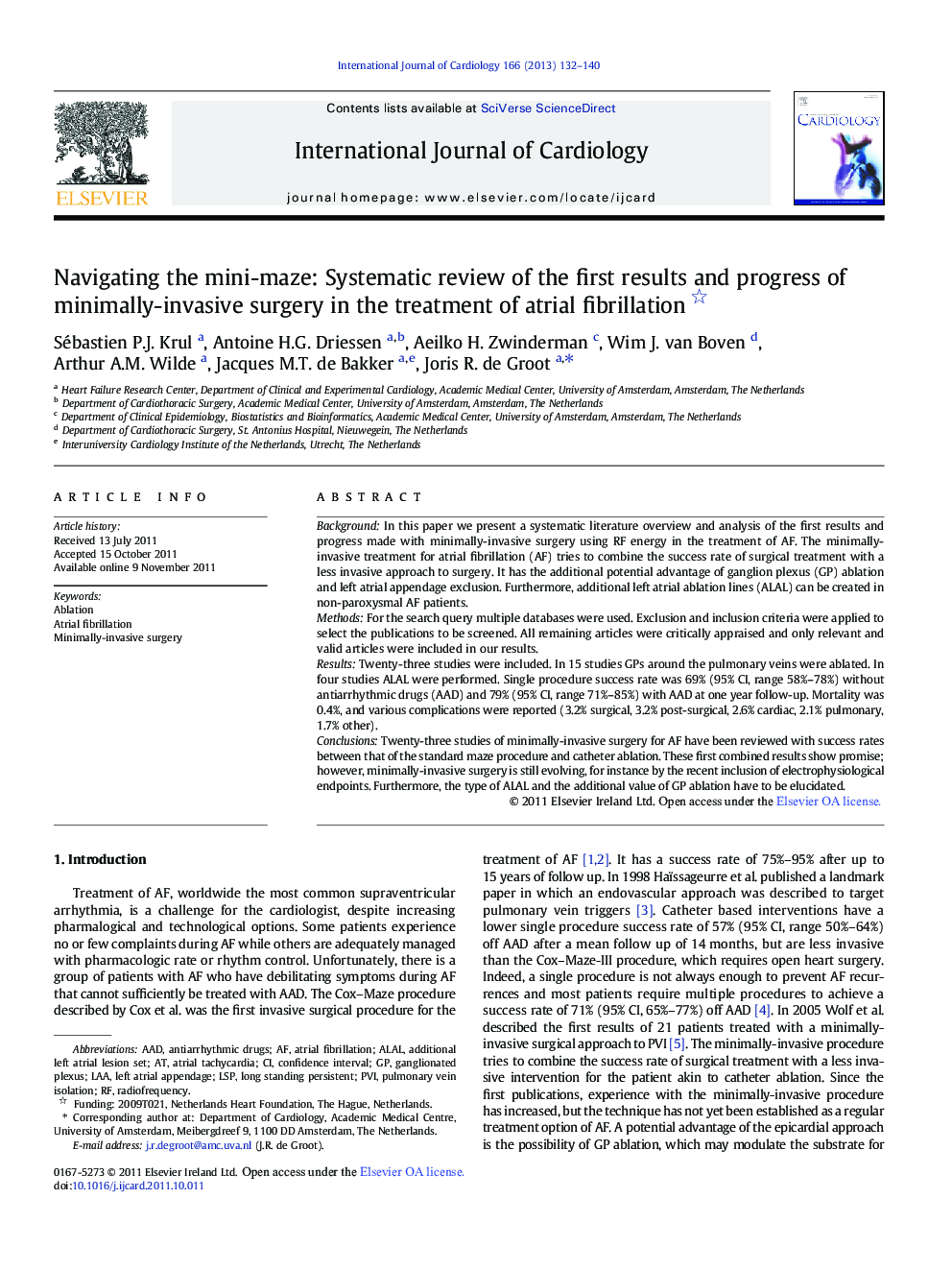| Article ID | Journal | Published Year | Pages | File Type |
|---|---|---|---|---|
| 5977393 | International Journal of Cardiology | 2013 | 9 Pages |
BackgroundIn this paper we present a systematic literature overview and analysis of the first results and progress made with minimally-invasive surgery using RF energy in the treatment of AF. The minimally-invasive treatment for atrial fibrillation (AF) tries to combine the success rate of surgical treatment with a less invasive approach to surgery. It has the additional potential advantage of ganglion plexus (GP) ablation and left atrial appendage exclusion. Furthermore, additional left atrial ablation lines (ALAL) can be created in non-paroxysmal AF patients.MethodsFor the search query multiple databases were used. Exclusion and inclusion criteria were applied to select the publications to be screened. All remaining articles were critically appraised and only relevant and valid articles were included in our results.ResultsTwenty-three studies were included. In 15 studies GPs around the pulmonary veins were ablated. In four studies ALAL were performed. Single procedure success rate was 69% (95% CI, range 58%-78%) without antiarrhythmic drugs (AAD) and 79% (95% CI, range 71%-85%) with AAD at one year follow-up. Mortality was 0.4%, and various complications were reported (3.2% surgical, 3.2% post-surgical, 2.6% cardiac, 2.1% pulmonary, 1.7% other).ConclusionsTwenty-three studies of minimally-invasive surgery for AF have been reviewed with success rates between that of the standard maze procedure and catheter ablation. These first combined results show promise; however, minimally-invasive surgery is still evolving, for instance by the recent inclusion of electrophysiological endpoints. Furthermore, the type of ALAL and the additional value of GP ablation have to be elucidated.
